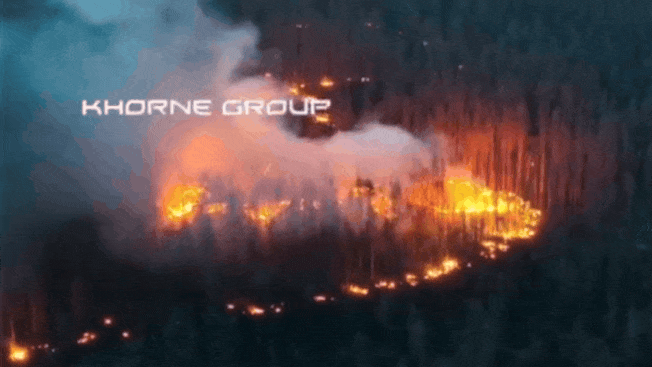
Several videos circulating on social media platforms, including one posted by the Ukrainian defense ministry on Telegram on Wednesday, depict the low-flying drones releasing torrents of fire – actually molten metal – onto Russian-held positions in wooded areas.
The white-hot mixture of aluminum powder and iron oxide, called thermite, burns at temperatures up to 4,000 degrees Fahrenheit (2,200 degrees Celsius). It can rapidly burn trees and vegetation providing cover to Russian troops, if not directly killing or disabling them, a CNN report said.
Thermite can easily burn through almost anything, including metal, leaving little protection against it. Thermite was first used by the Germans as bombs dropped from zeppelins over Britain in World War I. Both Germany and the Allies employed thermite aerial bombs in World War II, and they also used it to disable captured artillery pieces by placing thermite into the breech and melting the weapon shut from the inside.
Thermite is just one type of incendiary weapon, with others including napalm and white phosphorus.
“Incendiary weapons are weapons or munitions designed to set fire to objects or cause burn or respiratory injury to people through the action of flame, heat, or combination thereof, resulting from a chemical reaction of a flammable substance such as napalm or white phosphorus,” United Nations Office for Disarmament website says.
The website further says, “The use of incendiary weapons is heavily interlinked with concerns over the respect of international humanitarian law, particularly the prohibition of weapons that cause superfluous injury or unnecessary suffering and regulations to protect civilians from the effects of hostilities.”
The United Nations Office for Disarmament says that incendiary weapons can cause extensive destruction and environmental damage, with fires produced by the weapon itself or ignited by it being difficult to predict and contain. As a result, incendiary weapons are often referred to as “area weapons” due to their impact over a wide area.
The US military has also utilized thermite in grenades, with the US Army’s Pine Bluff Arsenal manufacturing the weapons from the 1960s through 2014 and then resuming production again in 2023.

